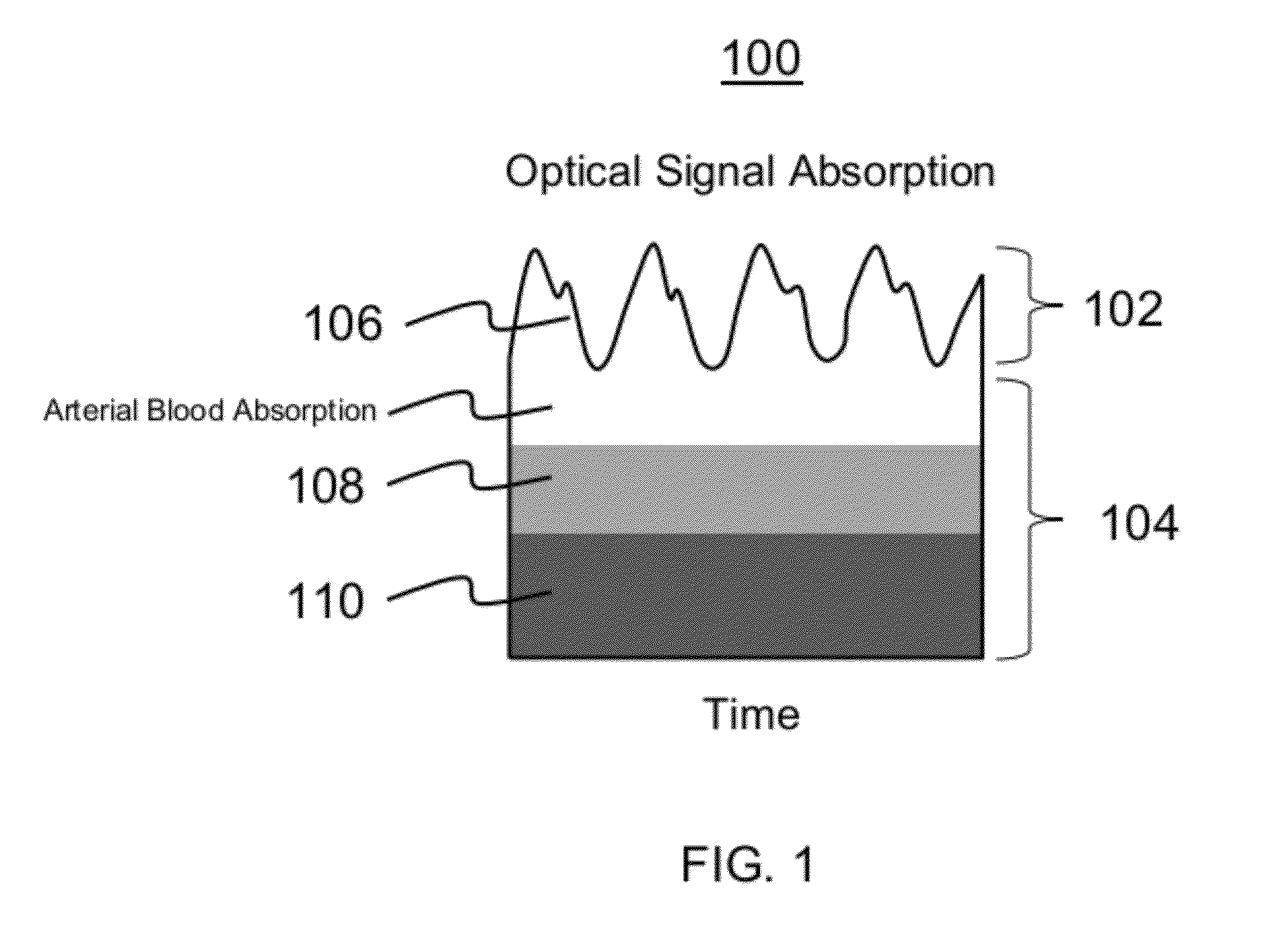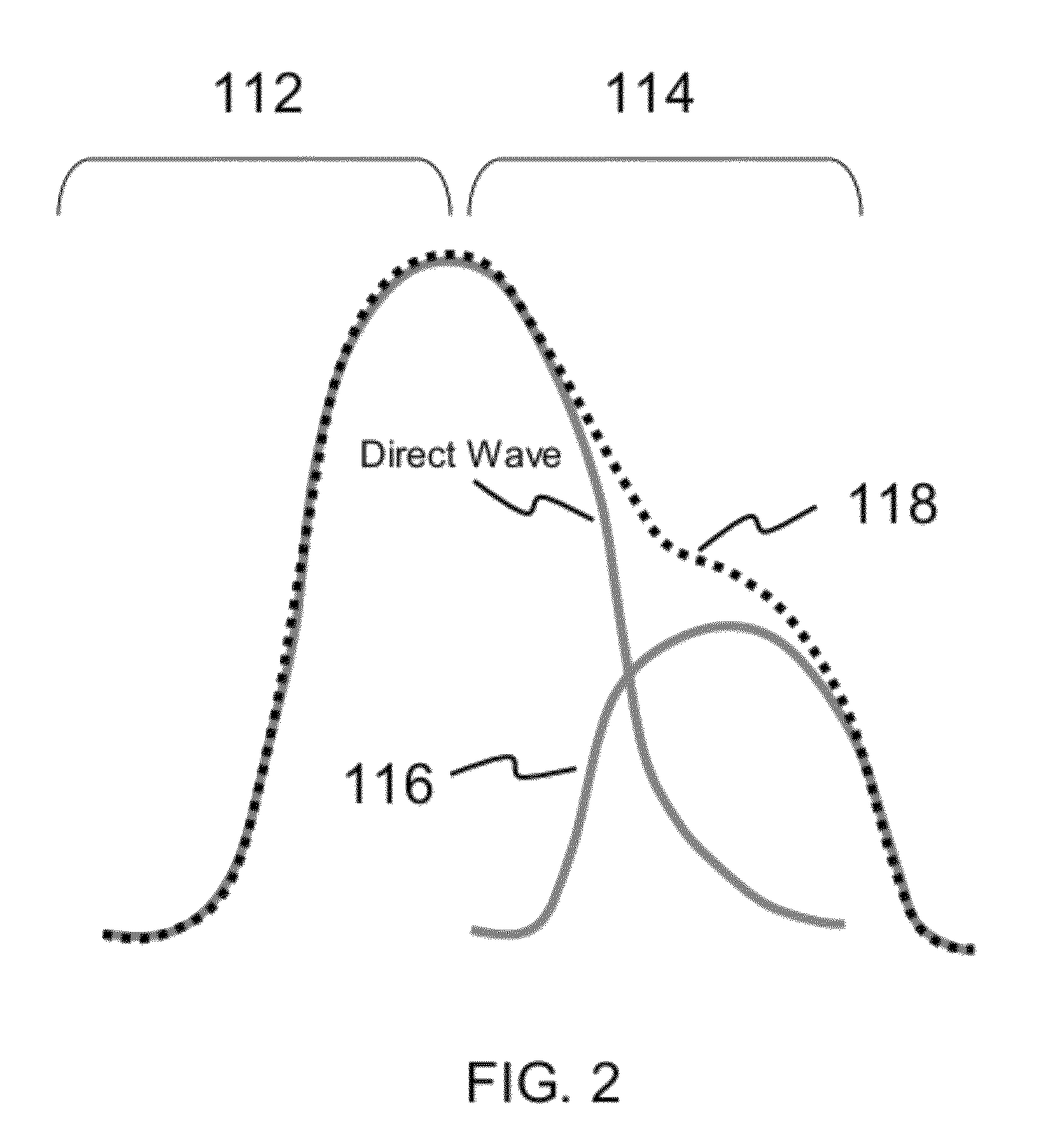Devices and methods for non-invasive optical physiological measurements
a physiological measurement and optical technology, applied in the field of non-invasive optical physiological measurement devices, can solve the problems of unreliable methods and noisy baseline of ac signal components, and achieve the effects of high signal-to-noise ratio, accurate measurement, and high signal-to-noise ratio
- Summary
- Abstract
- Description
- Claims
- Application Information
AI Technical Summary
Benefits of technology
Problems solved by technology
Method used
Image
Examples
Embodiment Construction
[0060]An optical measurement device for obtaining non-invasive physiological measurements and method of using the same is described more fully herein, including the pressure detection assembly configured to detect and display an amount of pressure applied by a body part of a user to the device during the optical measurement. When the user applies an appropriate amount of pressure to the optical measurement device, the resulting signal-to-noise ratio of the detected optical measurement signal can be increased, and a more accurate measurement signal can be obtained from the user. An optimal pressure can be determined in real-time by analyzing the detected optical measurement signal and correlating a high signal-to-noise ratio portion of the signal with a corresponding applied pressure. The user is then provided real-time feedback indicating whether the amount of pressure being applied by the user should be increased, decreased or maintained at the same level. The optical measurement d...
PUM
 Login to View More
Login to View More Abstract
Description
Claims
Application Information
 Login to View More
Login to View More - R&D
- Intellectual Property
- Life Sciences
- Materials
- Tech Scout
- Unparalleled Data Quality
- Higher Quality Content
- 60% Fewer Hallucinations
Browse by: Latest US Patents, China's latest patents, Technical Efficacy Thesaurus, Application Domain, Technology Topic, Popular Technical Reports.
© 2025 PatSnap. All rights reserved.Legal|Privacy policy|Modern Slavery Act Transparency Statement|Sitemap|About US| Contact US: help@patsnap.com



